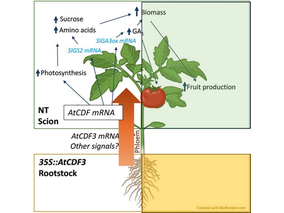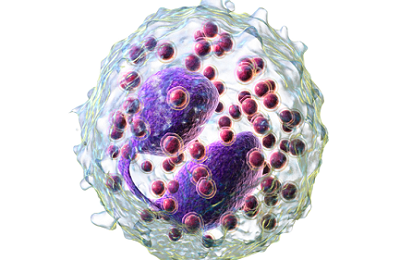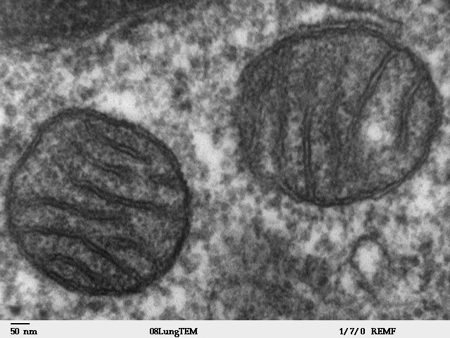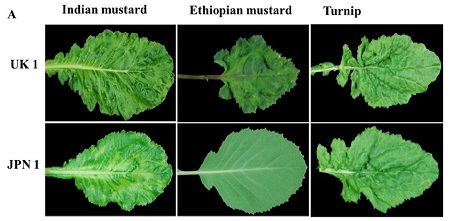Non-host virus resistance in plants has been classically considered as the virus inability to establish a systemic infection, not even to reach detectable titers in the inoculated leaves. This non-host resistance has been often equated with a complete immunity or extreme resistance.
The work by the CBGP ‘Plant Virus Biotechnology’ group has now shown that the presumed extreme resistance of Ethiopian mustard (Brassica carinata) to a certain strain of Turnip mosaic virus is only apparent, since it is possible to detect replicative virus infecting systemically, and the identification of the viral determinant of the resistance, provided that the appropriate technology is deployed. This work opens the door to the possibility of other instances of apparent immunity in different virus/non-host combinations.
Original Paper:
Sardaru, P; Sinausía, L; López-González, S; Zindovic, J; Sánchez, F; Ponz, F. 2018. "The apparent non-host resistance of Ethiopian mustard to a radish-infecting strain of Turnip mosaic virus is largely determined by the C-terminal region of the P3 viral protein". Molecular Plant Pathology. DOI: 10.1111/mpp.12674".

The research team observed changes in head circumf...

AtCDF3 gene induced greater production of sugars a...

Un estudio con datos de los últimos 35 años, ind...

En nuestro post hablamos sobre este interesante tipo de célula del...

Research led by IIBB-CSIC and CIBEREHD scientists identifies S-adenosy...
Biotechnology portal in Spain
Subscribe to our newsletter and stay up to date with the latest news and deals!
2013 © Biotech-Spain.com - Site Developments SL. All Rights Reserved. Terms of Service | Privacy Policy
Articles
Directory
